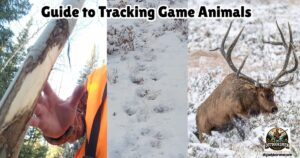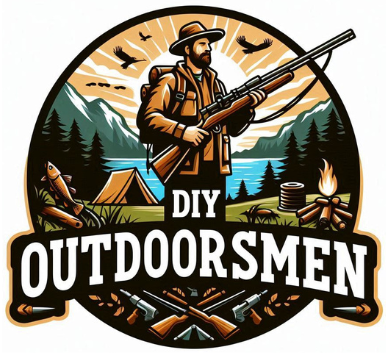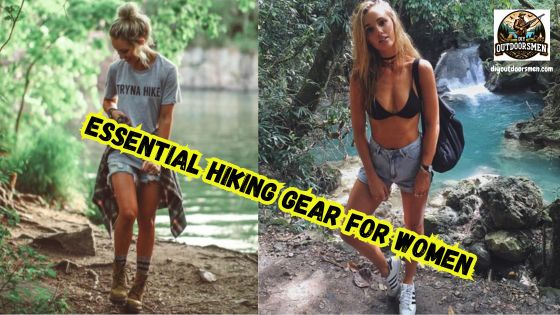Contents
- 1 Essential Beginner Hiking Gear for Women
- 2 Choosing the Right Hiking Gear
- 3 Step-by-Step Guide to Packing the Basics for Your First Hike
- 4 Common Beginner Hiking Gear Questions and Decisions
- 5 Tips for Staying Comfortable and Safe on the Trail
- 6 RealWorld Examples of Everyday Hiking Gear Decisions
- 7 Frequently Asked Questions
- 8 Final Thoughts on Beginner Hiking Gear for Women
When you start hiking, you quickly realize how much having the right hiking gear matters, especially for comfort and safety. Starting with just the basics can make those first hiking experiences much more enjoyable.
QUICK LOOK: Essential Gear to Pack for Your First Hike
- Pick the right boots: Try on a few different pairs, walk around the store, and see which ones feel comfortable right away. Look for a snug (not tight) fit and wiggle room for your toes.
- Choose a comfortable daypack: A women-specific daypack often fits better if you have a shorter torso. Make sure it feels good when loaded, not just empty.
- Dress in layers: I start with a moisture-wicking base layer, add a warmer layer like a lightweight fleece, and bring a rain shell, even if the forecast is clear. I can add or remove layers as the temperature changes.
- Bring enough water: For short hikes, I usually pack a full one-liter bottle or hydration bladder, more if it’s hot or the trail is long. If I need to refill from streams, a small water filter or purification tablets come along.
- Grab a snack: Energy bars, trail mix, or fruit are easy to pack and boost my energy on the go.
- Pack small essentials: I toss in a basic first aid kit, a fully charged phone (plus a power bank if I carry one), a map, car keys, cash, and an ID tucked in my pack. A small headlamp stays in the top pocket in case I finish later than expected.
As a woman new to hiking, you will find that prioritizing fit, comfort, and easy adjustments helps tackle new trails with confidence. Choosing beginner-friendly hiking gear can remove a lot of barriers and set you up for many fun adventures outdoors.
Essential Beginner Hiking Gear for Women
Building a basic hiking kit doesn’t need to be expensive or overwhelming. I focus on selecting items that are reliable, simple, and plain comfortable. As you get into the routine of hiking, you may want to add or upgrade gear, but a solid beginner set covers all your biggest needs. Here’s a look at what I consider truly helpful for starting:
- Hiking boots with good support and traction for uneven terrain
- A lightweight, comfortable backpack
- Layered clothing for changing weather
- Sun protection like a hat, sunglasses, and sunscreen
- Trekking poles for extra balance (optional but helpful)
- Enough water, plus a way to treat water if needed
- Easy to carry, energy-rich snacks
- Navigation tools (map, compass, or GPS app)
- A small first aid kit for minor emergencies
- Headlamp or flashlight
- Rain jacket or poncho
- Comfortable gloves for chilly weather
- Good hiking socks
- Moisture-wicking underwear
- Sturdy hiking pants or shorts
Sticking to these items kept my early hikes safe and comfortable, and upgrading them later felt more fun than stressful.
Choosing the Right Hiking Gear
Figuring out which hiking gear to buy first can be confusing. Focusing on fit and comfort goes a long way for women’s gear. Brands often offer women-specific sizing for boots, backpacks, and some clothes, which can make a difference in how comfortable you are on the trail. Here are some terms and features I recommend paying attention to when shopping:
- Ankle support: Hiking boots with higher cuffs provide more support, great for rocky or uneven trails.
- Moisture-wicking: Fabrics that draw sweat away from your skin, helping you stay dry.
- Pack size in liters: Day packs usually hold 15–30 liters, which is plenty for short trips.
- Adjustable straps: Look for backpacks with adjustable shoulder and waist straps for a custom fit.
- UPF-rated clothing: Sunprotective clothing labeled by its Ultraviolet Protection Factor (UPF) rating.
Caring about these features kept me from ending hikes with sore feet, sunburn, or an aching back. It’s worth it to try gear on in person, or order from retailers with easy returns, so you know you feel good wearing it.
Step-by-Step Guide to Packing the Basics for Your First Hike
I always start with the core items and then fill in small extras as needed. This simple checklist covers everything I bring for a beginner day hike:
- Pick the right boots: Try on a few different pairs, walk around the store, and see which ones feel comfortable right away. Look for a snug (not tight) fit and wiggle room for your toes.
- Choose a comfortable daypack: A women-specific daypack often fits better if you have a shorter torso. Make sure it feels good when loaded, not just empty.
- Dress in layers: I start with a moisture-wicking base layer, add a warmer layer like a lightweight fleece, and bring a rain shell, even if the forecast is clear. I can add or remove layers as the temperature changes.
- Bring enough water: For short hikes, I usually pack a full one-liter bottle or hydration bladder, more if it’s hot or the trail is long. If I need to refill from streams, a small water filter or purification tablets come along.
- Grab a snack: Energy bars, trail mix, or fruit are easy to pack and boost my energy on the go.
- Pack small essentials: I toss in a basic first aid kit, a fully charged phone (plus a power bank if I carry one), a map, car keys, cash, and an ID tucked in my pack. A small headlamp stays in the top pocket in case I finish later than expected.
Running through this list before each trip has made me feel much more prepared and relaxed on the trail.
Common Beginner Hiking Gear Questions and Decisions
When I was just starting out, these were the questions I asked most often about hiking gear. Here are answers based on what I’ve learned from experience:
- Do I need expensive boots right away?
Affordable hiking boots or trail shoes are totally fine for short and easy hikes. I only upgraded once I started hiking rougher trails or carrying a heavier pack. Make sure whatever you pick fits your foot shape well. - Should I bring trekking poles?
Trekking poles help with balance and take pressure off your knees, especially on hills or rocky trails. I found them optional for flat hikes, but they became a favorite tool after my first slippery descent. - What’s the best way to carry water?
For short hikes, I stick with a regular water bottle. On longer hikes, a hydration bladder is more convenient since I can sip as I walk. - What should go in my first aid kit?
I pack bandages, blister pads, antiseptic wipes, and tweezers. I also add pain relief medicine, sunscreen, and insect repellent. - Why bother with hiking socks or underwear?
Cotton holds onto moisture, which can make your feet or skin feel cold and lead to blisters or chafing. Hiking-specific socks and underwear use quick-drying fabrics. Switching to them made my hikes much more comfortable.
The Value of Layered Clothing
If I could give one piece of advice to beginners, it’s to embrace layers. Weather changes fast in the outdoors, and sweat can chill you quickly. With a good base layer, a breathable insulating layer, and a waterproof shell, I can handle hot, cold, and even wet conditions without weighing myself down.
Boots, Socks, and Blister Prevention
Foot comfort became a bigger deal than I expected. I realized that comfortable boots and dry, supportive socks stop most blisters before they start. If you’re just starting, carry a couple of blister bandages for peace of mind.
Tips for Staying Comfortable and Safe on the Trail
Feeling good on a hike comes down to a few smart habits. I learned these tips early on from experienced hikers, and they’ve made a real difference:
- Stop and adjust your gear if something feels uncomfortable. Fixing an aching toe or adjusting backpack straps early saves a lot of pain later.
- Use sunscreen and wear a wide-brimmed hat, even on cloudy days. Sun exposure can sneak up on you.
- Start slow with easier trails to build up calluses and strength before hiking more challenging ones.
- Don’t forget the smallest essentials: lip balm with SPF, sunglasses, and a lightweight bandana can all come in handy.
RealWorld Examples of Everyday Hiking Gear Decisions
On my early hikes, I mostly stuck to state parks and local trails. Here’s what worked best for me in those environments:
- State Park Hikes: I wore trail runners instead of boots, layered a T-shirt and fleece, used a 20-liter backpack, and packed a basic rain jacket, perfect for shaded, well-maintained paths.
- Mountain Day Hikes: I picked boots for ankle support, carried trekking poles, and wore convertible pants that could turn into shorts. I packed more snacks and always brought a headlamp.
- Desert Trails: In hot weather, a wide hat, UPF sleeves, and plenty of water made long, exposed hikes more manageable.
Learning by experience and being willing to ask more experienced hikers for advice made every outing easier and more fun. In some cases, I also learned to trust my instincts when conditions changed on the trail. One time, I decided to turn back early due to threatening clouds, which paid off when a storm hit soon after. Sometimes flexibility is your best piece of gear.
Frequently Asked Questions
Here are some common questions new women hikers bring up:
How do I avoid carrying too much weight?
Stick to the basics and skip extra gadgets until you know what you’ll really use. I learned to repack after each hike, removing things I didn’t touch and updating my essentials as I got more comfortable with what I needed. As you hike more, you collect little tricks for reducing bulk, like repackaging snacks into smaller bags or sharing certain gear with friends.
Is women-specific hiking gear worth it?
I’ve found that items shaped for women, especially boots, packs, and some clothing, fit me better and cause less rubbing or slipping. But what matters most is comfort, so if a unisex item works well, that’s fine too.
What should I do if I get lost on a hike?
I always bring a map or GPS, but if I feel lost, I stop, stay where I am, and look for trails or landmarks. Keeping calm and retracing my steps often helps. Letting a friend or family member know where I’m going before I hike is really important for safety.
Final Thoughts on Beginner Hiking Gear for Women
Starting as a beginner hiker means keeping things simple, comfortable, and practical. Building your kit and knowledge piece by piece can turn a walk in the woods into the start of a lifelong adventure. I’ve learned that confidence grows with every hike.
With the right gear and a little planning, those first steps can be the beginning of something great. Along the way, making time to enjoy the views and celebrate the small wins keeps the adventure fun and motivating. So, if you’re new to hiking, focus on comfort, listen to your body, and let every hike teach you something new.
Most Recent Articles:
- Complete Guide On Tracking Game Animals

- DIY 4-Step Guide To Field Dressing And Quartering A Deer

- Night Vision Binoculars For Nocturnal Hunting

- The Science Behind Camouflage Patterns For Deer Hunting

- Binocular Accessories For Hunters

- 9 Tips for Using Trail Cameras To Track Deer Movements

As always, stay safe, enjoy the journey, and please try to leave it cleaner than you found it. If you have any comments, questions, ideas, or suggestions, please leave them in the comment section below, and I’ll get back to you ASAP. You can follow us on YouTube: Man Art Creations for videos of our DIY Adventures.
P.S. Thanks so much for checking out our blog; we really appreciate it. Just so you know, we may receive a commission if you click on some of the links that appear on our site. This helps us keep our content free and up-to-date for everyone. We appreciate your support!



